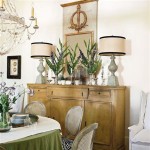Decorative Wood Trim for Furniture
Ornate wood trim is an excellent way to add an elegant and sophisticated touch to any piece of furniture. With a wide variety of styles and designs to choose from, you can find the perfect trim to match your décor and personal taste. In this article, we will explore the different types of decorative wood trim for furniture, their advantages, and how to use them to enhance the aesthetic appeal of your furniture pieces.
Types of Decorative Wood Trim
There are several types of decorative wood trim available for furniture, each with its own unique look and feel. Some popular options include:
- Moldings: Moldings are thin, profiled pieces of wood that can be applied to the edges or surfaces of furniture to create a decorative border. They are available in a variety of styles, including crown molding, base molding, and chair rail molding.
- Appliqués: Appliqués are small, decorative pieces of wood that can be added to furniture surfaces to create a three-dimensional effect. They are often used to accentuate details and focal points, such as carvings or inlays.
- Inlays: Inlays are decorative pieces of wood that are cut into the surface of furniture and then filled with a contrasting material, such as a different type of wood or a metal. Inlays can create intricate patterns and designs, adding a touch of elegance and sophistication.
Advantages of Decorative Wood Trim
Decorative wood trim offers several advantages for furniture, including:
- Enhanced Aesthetics: Decorative wood trim can significantly enhance the visual appeal of furniture, making it an excellent choice for creating a more sophisticated and stylish look.
- Increased Durability: Wood trim can help to protect furniture surfaces from damage, such as scratches and dents, by providing a protective layer.
- Added Value: Furniture with decorative wood trim is often more valuable than plain furniture, making it a good investment for those who want to increase the worth of their furniture.
How to Use Decorative Wood Trim
When using decorative wood trim for furniture, it is important to consider the following factors:
- Furniture Style: The style of the furniture should dictate the type and design of the wood trim. For example, traditional furniture would benefit from classic moldings, while contemporary furniture might look better with modern appliqués.
- Scale: The scale of the wood trim should be appropriate for the size of the furniture piece. Large furniture pieces can accommodate larger trim, while smaller pieces may require more delicate details.
- Placement: The placement of the wood trim should enhance the overall design of the furniture. Consider the focal points and lines of the piece to determine the best placement for the trim.
By following these guidelines, you can use decorative wood trim to transform ordinary furniture into extraordinary pieces that will add style and sophistication to any room.

0 3 To 4 Wood Trim Molding Back Flat Unpainted Carved Line For Wall Furniture Edges Or Paneling Frames Md102a

Decorative Wood Woodworker Express

Fl Italian 1h 7 16relief

Leaf Li Empire 1h 1 4relief

Large Furniture Applique Decorative Wood Trim

Decorative Wood Molding For Furniture

Li Louis Xvi 3 4h 1 8relief

Create Your Own Furniture Trim Designs Salvaged Inspirations

Width 2 4 To 5 0 Carved Wood Line Molding Back Flat Unpainted Moldings Profile Strips For Furniture Edge Or Mirror Ts Md102c

Decorative Wood Mouldings Made Of Oak At Carved Decor Com








